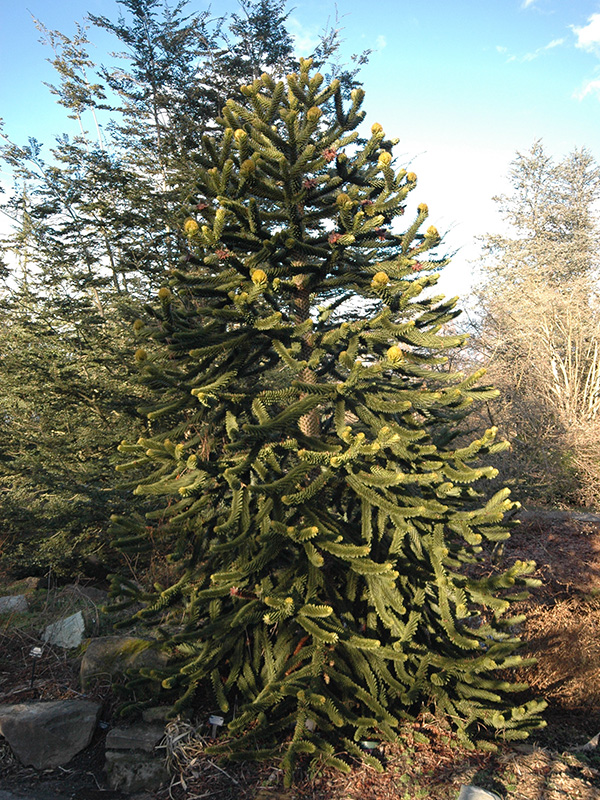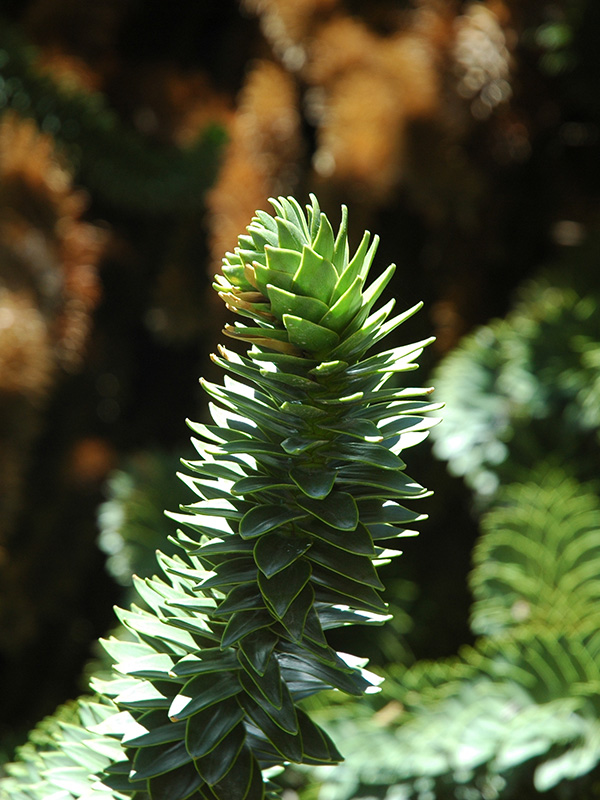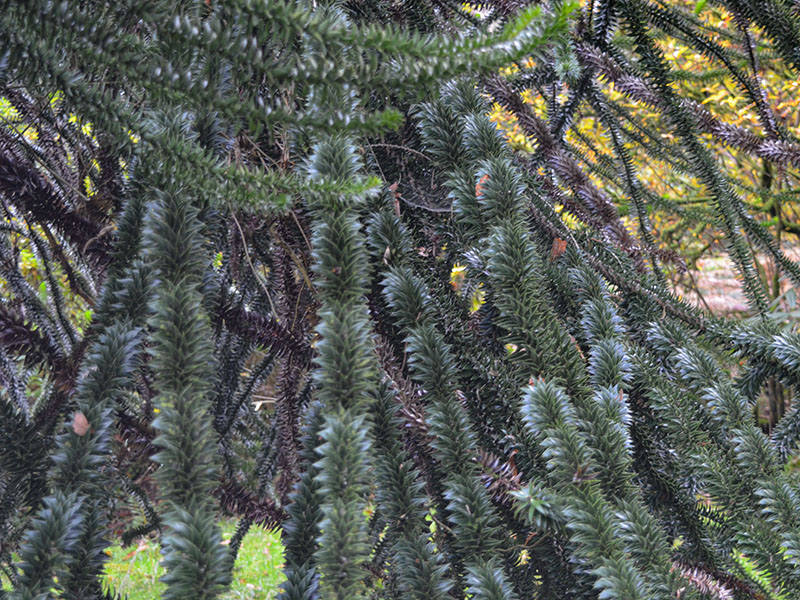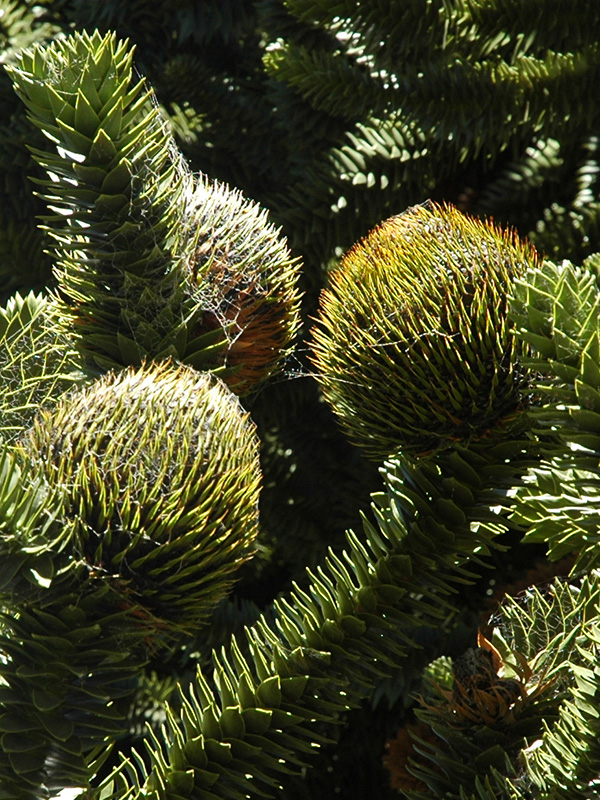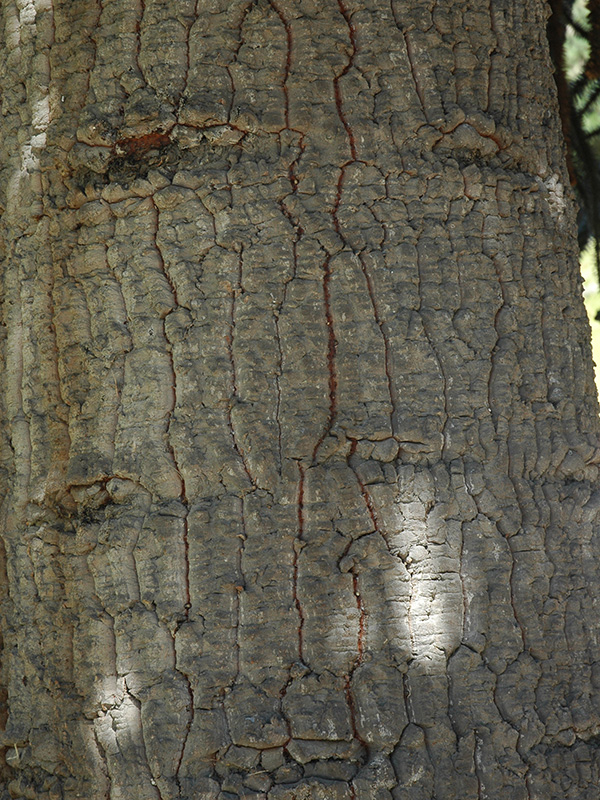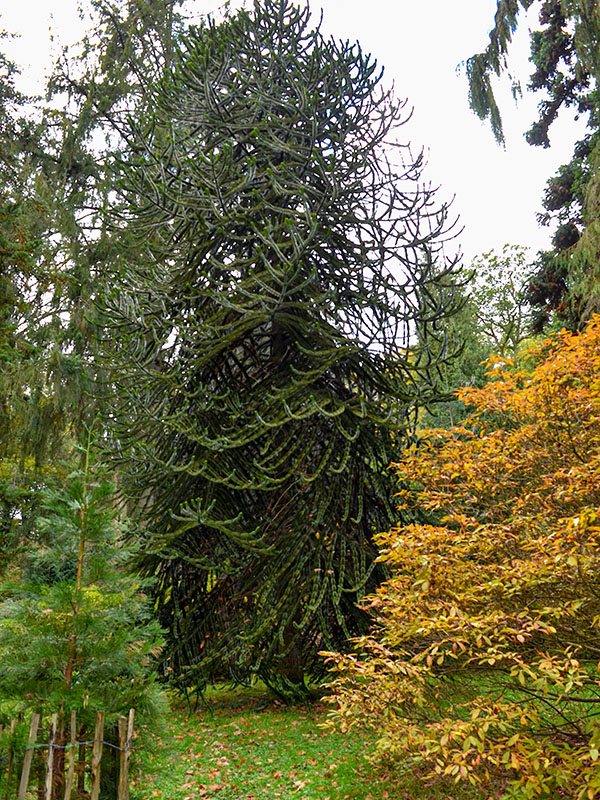| General Description | Araucaria araucana is an ornamental evergreen tree, with its out-of-world form and tangled appearance. It has very spiny needles that line the entirety of its branches, and very large, ornamental cones which produce edible seeds. |
| ID Characteristic | It has long spiny needles lining its branches, and large cones approximately 11-18 cm in length. |
| Shape | Upright pyramidal form in youth with sporadic branching, however becomes more rounded or oval with maturity as the lower branches drop off. |
| Landscape | Used as a specimen tree or massing plant, monkey puzzle can be very hard to fit into conventional designs in the landscape due to its very bold and unique form. It is moderately urban tolerant, and can be messy from dropping needles and cones. |
| Propagation | Propagate from semi-hardwood stem tip cuttings taken in summer, will root very easily. Cuttings must only be taken from vertical branches, as horizontal branches will create sprawling shrubs. Seed should be sown in autumn, they will germinate after being stratified for 1-2 months at 15°C. Plant in a seed tray and keep moist until plants are big enough to handle, then transplant the saplings into individual pots and harden plants off in summer. |
| Cultivation | Full to partial sun in moist fertile well-drained loam, sand or clay soil. It is pH adaptable and will tolerate alkaline, acidic, or neutral soils but must not become too wet or fungal infections can occur. Plant one male for every four to five females, however trees cannot be sexed until they produce cones (40 years from seed). |
| Pests | Relatively pest and disease free, although leaf spot and sooty mold can occur. Honey fungus attacks the root system causing root death; signs include crown dieback and yellow toadstools growing at base of tree. There is no chemical available for control, options would include: prune out and burn affected areas and deep cultivation. |
| Notable Specimens | Parque Nacional Conguillio Chile, 223 cm dbh and 50 m tall.
Estate Rhederoord, De Steeg, Netherlands, 22.6 m tall. Pencarrow Manor, Cornwall, England.
Stourhead Gardens, Wiltshire, United Kingdom.
|
| Habitat | Grows in pure stands or deciduous, and evergreen forests in sunny locations at the base of the Andes Mountains, in very rich, moist, well-drained soils. |
| Bark/Stem Description | Grey bark is smooth in youth, and becomes quite coarse with age resembling an elephants foot with folding ridges and a rough texture. |
| Flower/Leaf Bud Description | Buds are green and inconspicuous while terminal buds are prominent. |
| Leaf Description | Leaves are triangular or lanceolate scales, parallel in venation and sharp. They are commonly 3-5 cm in length and 1-3 cm in width at the base, and line the entire branch of the tree. Leaves are spirally arranged. The drought-resistant individual leaves can have a lifespan of 15 years. |
| Flower Description | Typically dioecious, female cones are spiny and become quite large ranging from 11-18 cm in length. Male cones are oval and small in size, green with brown hairs. Flowers are borne in whorls of 5 at the ends of the branches. |
| Fruit Description | The trees are dioecious and take about 40 years to produce a crop of seed. The wingless seeds are found in very large cones ranging from 11-18 cm in length, and can take as long as 3 years to ripen. Seeds are approximately 3 cm in size, green in spring and turn brown as they ripen in summer, they are arrow-shaped. The cones drop to the ground and release their seeds with each cone containing about 200 large seeds. |
| Colour Description | Leaves are bright green throughout the year and the flowers are green with brown hairs but are insignificant. New stem growth is green fading to grey with maturity, buds are green and cones are brown producing bright brown to orange seeds. |
| Texture Description | Very coarsely textured throughout the year. |
